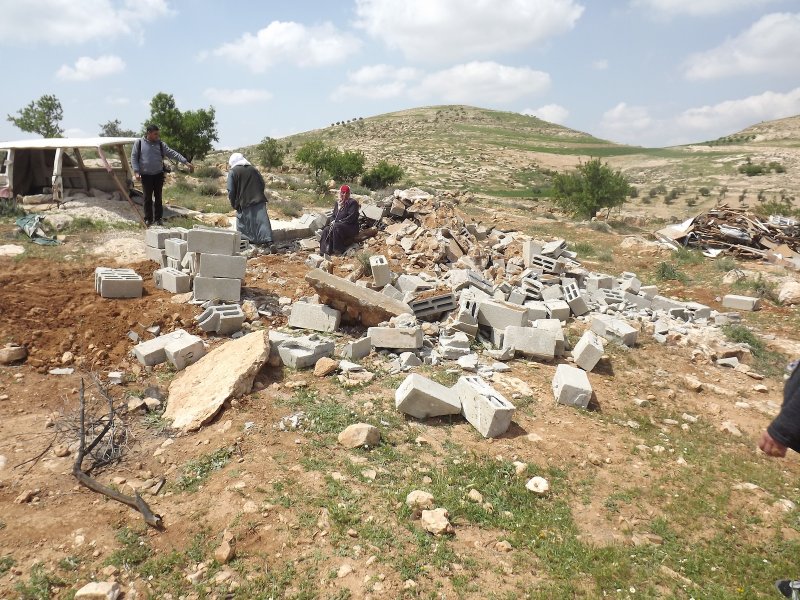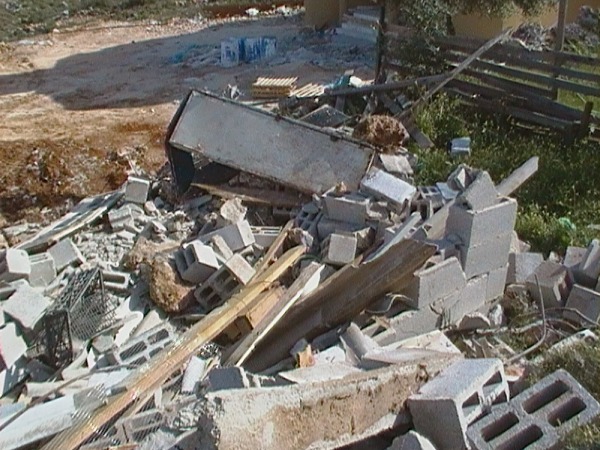-
BDS: Bill Gates slammed over links to Israel prison torture
Addameer and Palestinian BDS National Committee Palestinian human rights organisations have criticised Bill Gates after it emerged that his charitable foundation is heavily invested in G4S, a private security company that helps Israel run prisons at which Palestinian political prisoners are held without trial and subjected to torture. In an open letter to the Bill […]
-
Six shelters demolished by the Israeli forces in the Palestinian village of At Tuwani
3rd April 2014 | Operation Dove | At-Tuwani, Occupied Palestine On April 2 the Israeli army together with some Border Police and District Coordination Office (DCO) officers demolished six shelters made of concrete in the Palestinian village of At-Tuwani. At 9:20 am a convoy made up of one bulldozer, two army Jeeps, three Border Police vehicles, and […]
-
Demolitions in Bruqin: “If you really want peace, you wouldn’t take what’s mine”
2nd April 2014 | International Solidarity Movement, Nablus Team | Bruqin, Occupied Palestine On the 1st of April, at approximately 5.30 AM, a bulldozer and eight military jeeps arrived in the village of Bruqin close to the city of Nablus. The bulldozer first destroyed a farmers shed, killing the ten rabbits inside. The destruction continued […]
Action Alert An Nabi Saleh Apartheid Wall Arrests BDS Bethlehem Bil'in Cast Lead Demonstration Denial of Entry Ethnic Cleansing Farmers Gaza Global Actions Hebron House Demolition International law Israeli Army Jerusalem Live Ammunition Nablus Ni'lin Prisoner Ramallah Rubber-coated steel bullets Settlement Settlers Settler violence Tear-Gas Canister Video



